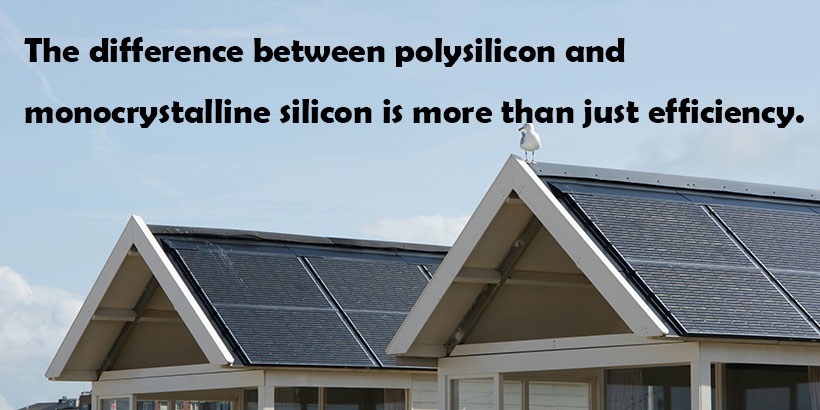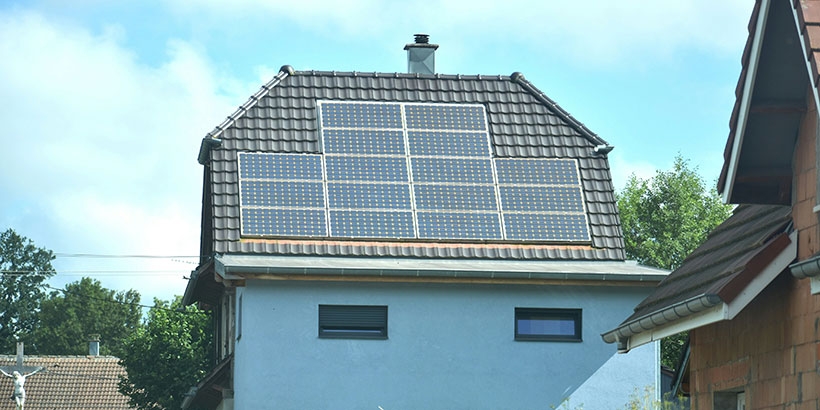Most of you know that solar panels are efficient enough for an entire home, at least when it's sunny. Nonetheless, did you know that most solar panels are only 15-20% efficient? Some skeptics might say, "Wow, there's a lot of room for improvement in the efficiency of these solar panels. I'm going to wait a few more years before I put my money into solar." That argument may seem reasonable, but here at powerhome, we want to tell our customers that, according to the laws of physics, the efficiency of solar panels probably won't improve much further. However, even if the efficiency is only 15-20%, these solar panels are still efficient enough to do the job.
Current Efficiency of Solar Panels
Polycrystalline solar panels have an efficiency of about 15%. Meanwhile, monocrystalline solar panels are slightly higher quality and can be as efficient as 18%-22%. PowerHome uses these solar panels because we want to provide our customers with a top-notch, high-quality product built to last. The difference between polycrystalline and monocrystalline silicon is inefficiency and their cost and application scenarios. Polycrystalline panels are cheaper to manufacture and are suitable for those with limited budgets who still want to utilize solar energy. Monocrystalline panels, on the other hand, are preferred by users seeking high performance and durability due to their higher efficiency and longer lifespan.

According to the laws of physics, solar panels have limited room for efficiency improvement. Tom Murphy, a professor at the University of California, San Diego, details in his article why existing efficiencies are good enough. In a typical location in the United States, the average annual sunshine duration is five hours. This means that the 1,000 watts/square meter of solar flux that reaches the ground when the sun is shining directly on it can be used efficiently for five hours per day. Therefore, each square meter of solar panel can receive 5 kWh of solar energy per day. At 15% efficiency, each square meter of PV panels captures and delivers 0.75 kWh of energy to the house. A typical American home uses 30 kWh of electricity per day, so we would need 40 square meters of solar panels. This equates to 430 square feet, or about one-sixth of the roof area of the average U.S. home (equivalent to the roof area of a two-car garage).
Efficiency and Value in Real-world Applications
The more efficient any product is indeed, the higher the price. However, POWERHOME believes that the monocrystalline panels it uses are not only good value for money, but also extremely efficient. You don't need a lot of solar panels on your roof, as confirmed above. That's why we're so selective about where we install our solar panels. We only want to install them on the south side of your home so they have the best chance of capturing the sunlight they need to maximize the amount of power the solar panels can generate.
Still not convinced that 15-20% efficiency is good enough? Think about it - Murphy points out that automobiles and even human metabolisms are about 15-25% efficient (that is, in the range of solar panels). So, should we stop driving cars or eating at those levels of efficiency? Of course, we don't. We need mobility and we need food! Similarly, solar panels, even at their current efficiency, can provide enough power for your home to help you lower your electric bill and reduce your impact on the environment.

Practical Benefits of Solar Panels
So while you're still on the fence, waiting for better solar panels, know that they're good enough and the right size system for your home is easy to install on your home's roof. Now is the time to let solar panels bring you the benefits of lowering your electric bill and protecting the environment. By installing solar panels, you will not only significantly reduce your monthly electricity bill, but you will also be contributing to the reduction of your carbon footprint. In the long run, a solar investment will provide ongoing financial returns and environmental benefits.
Although there is limited room for improvement in the efficiency of solar panels, the overall performance and cost-effectiveness of solar systems will continue to improve in the future as technology continues to advance. For example, new materials and manufacturing processes may further reduce costs and improve panel durability and power generation efficiency. In addition, the development of smart grid and energy storage technologies will also enhance the flexibility and reliability of solar systems, making solar energy useful in a wider range of application scenarios.

When considering the installation of solar panels, there is no need to worry too much about their efficiency. Current efficiencies of 15-20% are more than sufficient to meet a household's daily electricity needs and provide significant energy savings. By choosing high-quality monocrystalline solar panels, you can ensure the high efficiency and long-term durability of your system. PowerHome.com would like to be your partner in solar energy investment, helping you to achieve your goals of energy self-sufficiency, lowering your electricity bill, and protecting the environment.
Now is the time to act! Don't wait for future technological breakthroughs, because existing solar panels are already efficient enough. Consult with us today to learn more about solar energy systems and start enjoying the many benefits of solar energy. Together, let's move towards a green, energy-efficient future that protects your financial security and realizes sustainability goals. Sign up for our free guide to learn more about how to optimize your home's energy consumption and ensure you get the most out of your solar investment.
(1).png)
(1).png)